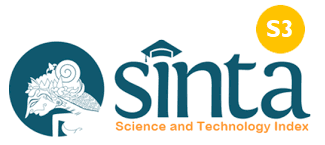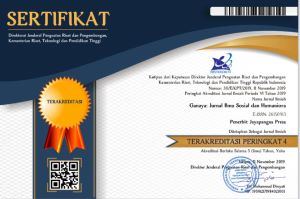Students’ Perception of The Use of Mobile Application Pingolearn in Learning to Speak English
DOI:
https://doi.org/10.37329/cetta.v8i2.4130Keywords:
Pingolearn Application, Speaking Skills, Students’ PerceptionAbstract
This study aims to explore students' perceptions of using the Pingolearn mobile application as a learning tool to improve English speaking skills. Rapid technological advances have encouraged many students to use application-based learning tools to improve the quality of students' English speaking skills. This research focuses on finding out the effectiveness and benefits of the Pingolearn application when used by students. A qualitative approach with the case study method used. This research involved 30 students from Prayatna Medan High School, one of the high schools in Medan City, consisting of 18 female students and 12 male students. The selection of participants in this study used a purposive sampling technique. Data collection techniques include observation, questionnaires and interviews to explore students' experiences and perceptions of the Pingolearn application. After the data was collected, the researcher analyzed it using Thematic Analysis. The research results show that the majority of students responded positively to the Pingolearn application, especially in growing self-confidence when speaking. They also stated that interactive features, such as AI voice dialogue and conversation simulations, were very interesting and useful. However, there were several challenges that faced students when using them. These findings indicate that Pingolearn is a mobile-assisted learning tool that can be used in English speaking learning to improve English language skills. The results of this study confirm that the use of technology in language learning has great potential to significantly increase students' motivation, self-confidence and speaking abilities.
References
Amran, A. (2024). Using Fondi Application to Escalate the Speaking Ability of EFL High School Students. Journal of English Language and Education, 9(5), 9-18.
Arifiyana, A. & Dzulfikri. (2023). Analysis of Students’ Perception Toward the Use of the Fondi Application to Learn Speaking English in Junior High School. Education and Human Development Journal, 8(2), 30-40.
Aswaty, P., & Indari, A. (2022). The Effect of Using Elsa (English Language Speech Assistant) Speak Application on Students’ Speaking Ability for the Eleventh Grade of Mas Darul Al Muhajirin in the Academic Year 2021/2022. Serunai: Jurnal Ilmiah Ilmu Pendidikan, 8(1), 18-23.
Al-Sharif, F. M. (2023). The Effects of Using Some Chosen English Learning Apps on Speaking Performance of Khulais first Secondary School Students, First Grade. Multi-Knowledge Electronic Comprehensive Journal For Education & Science Publications (MECSJ), (62), 1-37.
Arikunto, S. (2010). Prosedur Penelitian: Suatu Pendekatan Praktik. Jakarta: Rineka Cipta.
Azzahra, N., Widiastuti, P. T., Sopyani, N., & Luthfiyyah, R. (2024). A Study on English Students’ Perception Regarding The AI Implementation on Listening and Speaking Skills. Indonesian Journal of Innovation and Applied Sciences (IJIAS), 4(2), 113-120.
Bandura, A. (1986). Social Foundations Of Thought And Action: A Social Cognitive Theory. Englewood Cliffs, NJ: Prentice-Hall.
Chaniago, A. F., & Rahman, B. I. (2024). English Speaking Skill Through Rosetta Stone Application At Junior High School: Students’ Voices. Didaktika: Jurnal Kependidikan, 13(2), 1691-1700.
Firdaus, M. A. (2023). Busuu Application In Teaching Speaking Ability At Islamic School. Sindoro Cendikia Pendidikan, 1(1).
Fitrah, R., & Rahmaniah, R. (2024). Student Perceptions Of Using The Elsa Speak Application In Learning English-Speaking. International Undergraduate Conference on English Education, 3(1), 242-253.
Fitria, N., Usman, M., & Sahara, N. (2023). Duolingo Application For Advancing English Speaking Skills. Journal of Innovation in Educational and Cultural Research, 4(4), 587-595.
Garcia, M. (2022). Understanding Student Engagement In Mobile-Assisted Learning: A Case Study. Educational Technology & Society, 25(1), 78-89.
Granić, A., & Marangunić, N. (2019). Technology Acceptance Model In Educational Context: A Systematic Literature Review. British Journal of Educational Technology, 50(5), 2572-2593.
Hikmah, N., Sari, W., Hidayati, H., Irwandi, I., Ilham, I., & Bafadal, F. (2023). The Implementation of Mobile Assisted Language Learning to Improve Students’ Speaking Skill. Seminar Nasional Paedagoria, 3, 73-79.
Jalkanen, J. (2015). Development Of Pedagogical Design In Technology-Rich Environments For Language Teaching And Learning. Doctoral dissertation, University of Jyväskylä.
Johnson, R., & Brown, L. (2019). The Role Of Student Engagement In Technology-Enhanced Learning Environments. International Journal of Educational Technology, 9(2), 112-125
Kazhan, Y., Hamaniuk, V. A., Amelia, S., & Tarasenko, R. (2020). The Use Of Mobile Applications And Web 2.0 Interactive Tools For Students’ German-Language Lexical Competence. CTE Workshop Proceedings, 7, 392-415
Kuning, D. S. (2019). Technology In Teaching Speaking Skill. Journal of English Education, Literature and Linguistics, 2(1), 50-59.
Luckin, R., & Holmes, W. (2016). Intelligence Unleashed: An Argument for AI in Education In Pearson Education. UCL Knowledge Lab: London, UK.
Nowell, L. S., Norris, J. M., White, D. E., & Moules, N. J. (2017). Thematic Analysis: Striving To Meet The Trustworthiness Criteria. International journal of qualitative methods, 16(1), 1-13.
Poláková, P., & Klímová, B. (2019). Mobile Technology And Generation Z In The English Language Classroom-A Preliminary Study. Education Sciences, 9(3), 1.
Rambe, I. H., & Amran, A. (2024). Using Fondi Application to Escalate the Speaking Ability of EFL High School Students. Journal of English Language and Education, 9(5), 9-18.
Raj, K. A., & Baisel, A. (2022). Role Of Mobile Application In Enhancing English Speaking Skills. Journal of Positive School Psychology, 6(8), 250-261.
Rajendran, T., & Yunus, M. M. (2021). A Systematic Literature Review on the use of Mobile-assisted Language Learning (MALL) for Enhancing Speaking Skills among ESL and EFL Learners. International Journal Of Academic Research in Progressive Education and Development, 10(1), 586-609.
Redjeki, I. S., & Muhajir, R. (2017). Supporting Students’ Self -Directed Learning in EFL Speaking Classroom by Using Cake Application. Journal of English Language Learning, 6(2), 212-219.
Ridhallah, R., Yoestara, M., & Faudi, F. (2024). An Analysis of Intermediate Level Speaking Students’ Perception of Cake Application for Speaking Skill Improvement. IJELR: International Journal of Education, Language, and Religion, 6(1), 67-74.
Shadiev, R., Yang, M. K., Reynolds, B. L., & Hwang, W. Y. (2022). Improving English As A Foreign Language-Learning Performance Using Mobile Devices In Unfamiliar Environments. Computer Assisted Language Learning, 35(9), 2170-2200.
Sosas, R. V. (2021). Technology In Teaching Speaking And Its Effects To Students Learning English. Journal of Language and Linguistic Studies, 17(2), 958-970.
Syabina, A., & Rahman, B. I. (2024). ELSA Speak Application As A Learning Media in Practicing Student’s Speaking Skills: Students’ Voices. Scope: Journal of English Language Teaching, 8(2), 288-295.
Syafi’i, A., & Daulay, S. H. (2024). Student's Perception of Using Cake Application to Improve Speaking Skill. Exposure: Jurnal Pendidikan Bahasa Inggris, 13(1), 299-311.
Tampubolon, S., Bulan, D., Gaol, D. B. P. L., Sinaga, N. T., & Gultom, S. P. (2023). Students’ Ability in Pronouncing English Words by Using ELSA Speak Application of the Second-Year Students of SMA Eka Prasetya Medan. Innovative: Journal Of Social Science Research, 3(2), 5041-5048.
Yanthi, W., & Nuraeni. (2021). The Use Of Cake Application In Teaching Speaking To Senior High School’s Students. Bogor English Student and Teacher (BEST) Conference, 2, 165-170.
Yin, R. K. (2017). Case Study Research And Applications: Design And Methods. Amerika Serikat: SAGE Publications.
Zou, B., Guan, X., Shao, Y., & Chen, P. (2023). Supporting Speaking Practice By Social Network-Based Interaction In Artificial Intelligence (AI)-Assisted Language Learning. Sustainability, 15(4), 28-72.
Downloads
Published
How to Cite
Issue
Section
License
Copyright (c) 2025 Dwi Fatimah, Siti Ismahani

This work is licensed under a Creative Commons Attribution-ShareAlike 4.0 International License.
An author who publishes in the Cetta : Jurnal Ilmu Pendidikan agrees to the following terms:
- Author retains the copyright and grants the journal the right of first publication of the work simultaneously licensed under the Creative Commons Attribution-ShareAlike 4.0 License that allows others to share the work with an acknowledgement of the work's authorship and initial publication in this journal
- Author is able to enter into separate, additional contractual arrangements for the non-exclusive distribution of the journal's published version of the work (e.g., post it to an institutional repository or publish it in a book) with the acknowledgement of its initial publication in this journal.
- Author is permitted and encouraged to post his/her work online (e.g., in institutional repositories or on their website) prior to and during the submission process, as it can lead to productive exchanges, as well as earlier and greater citation of the published work (See The Effect of Open Access).
Read more about the Creative Commons Attribution-ShareAlike 4.0 Licence here: https://creativecommons.org/licenses/by-sa/4.0/.





